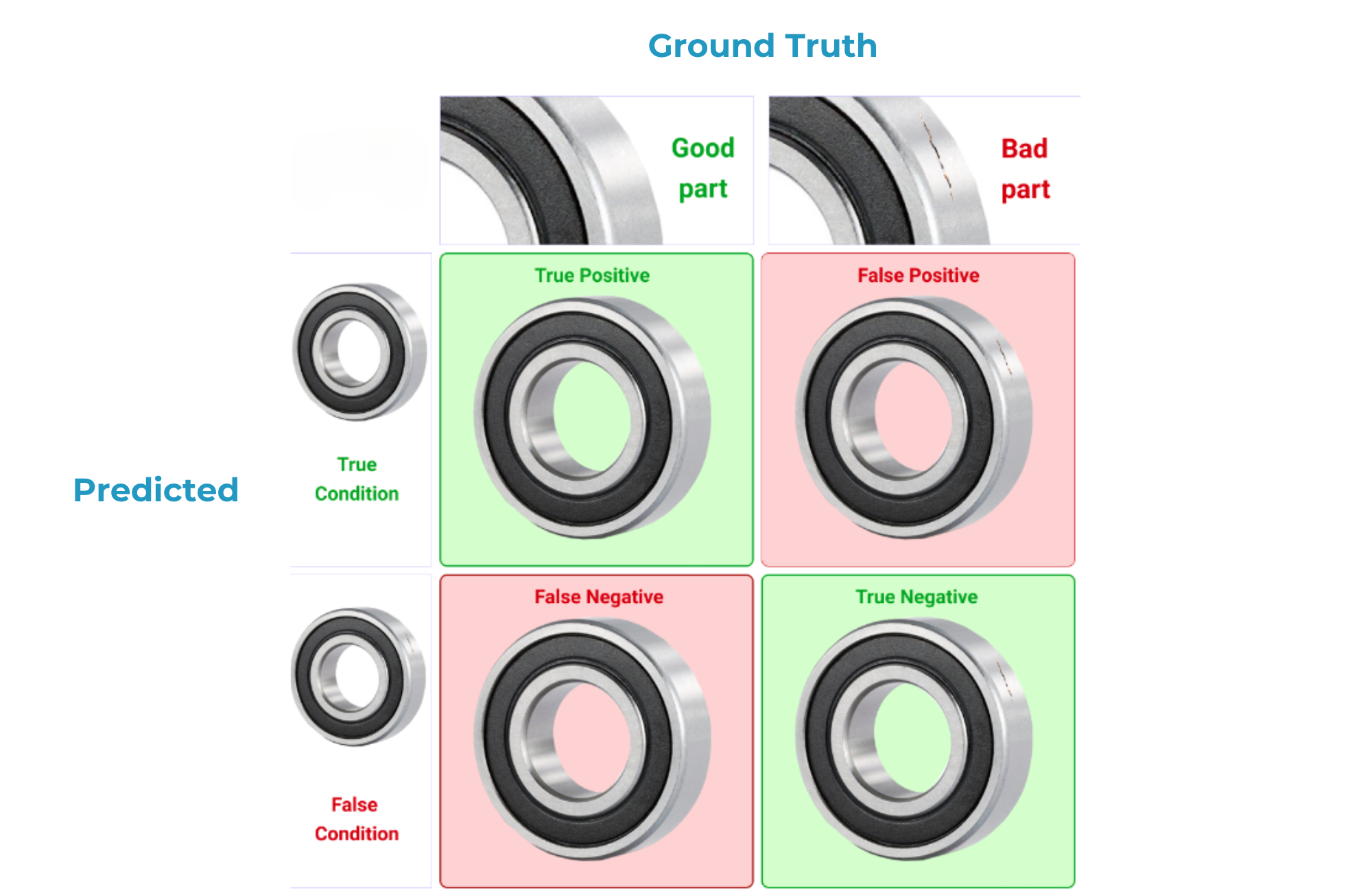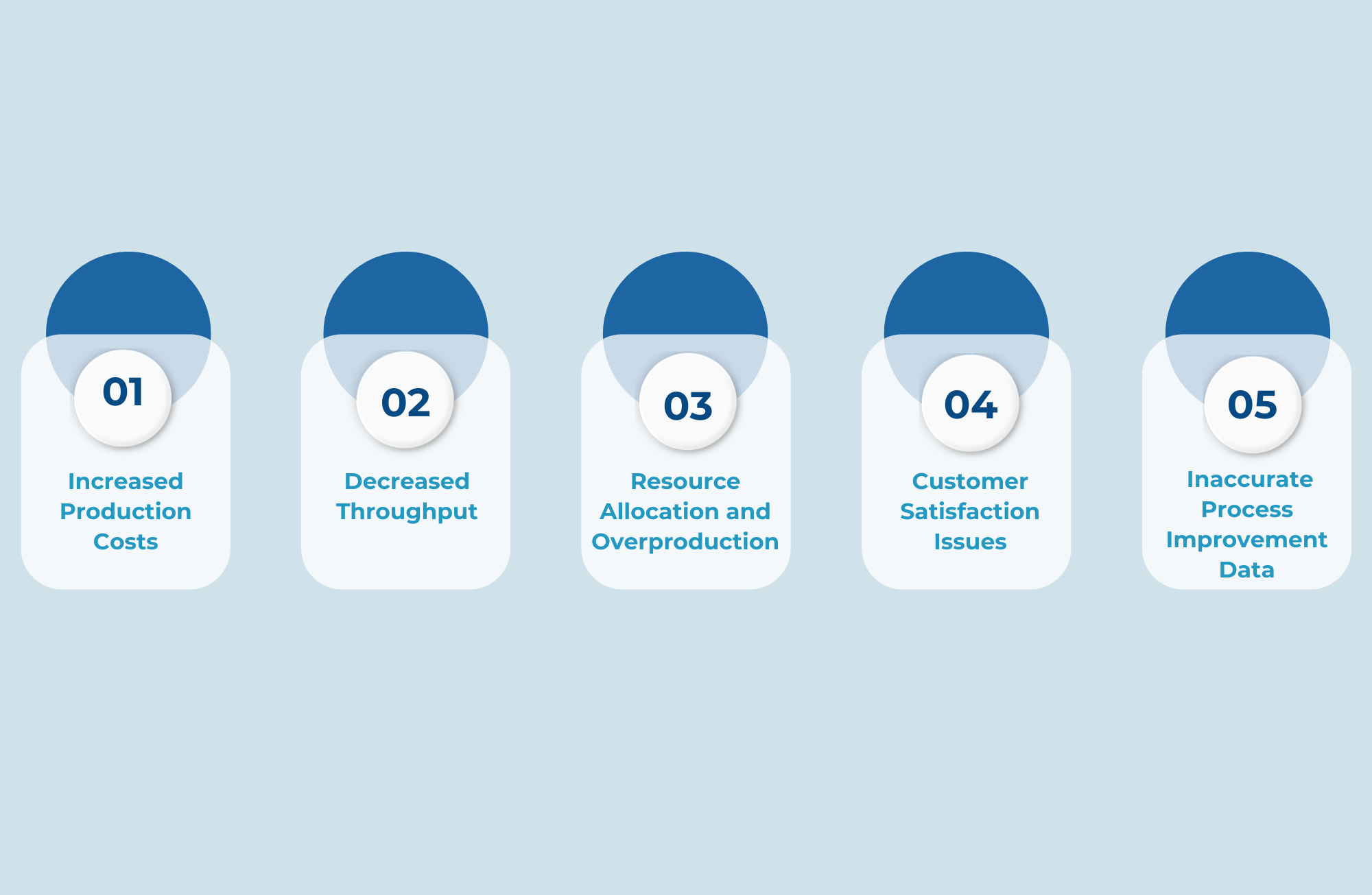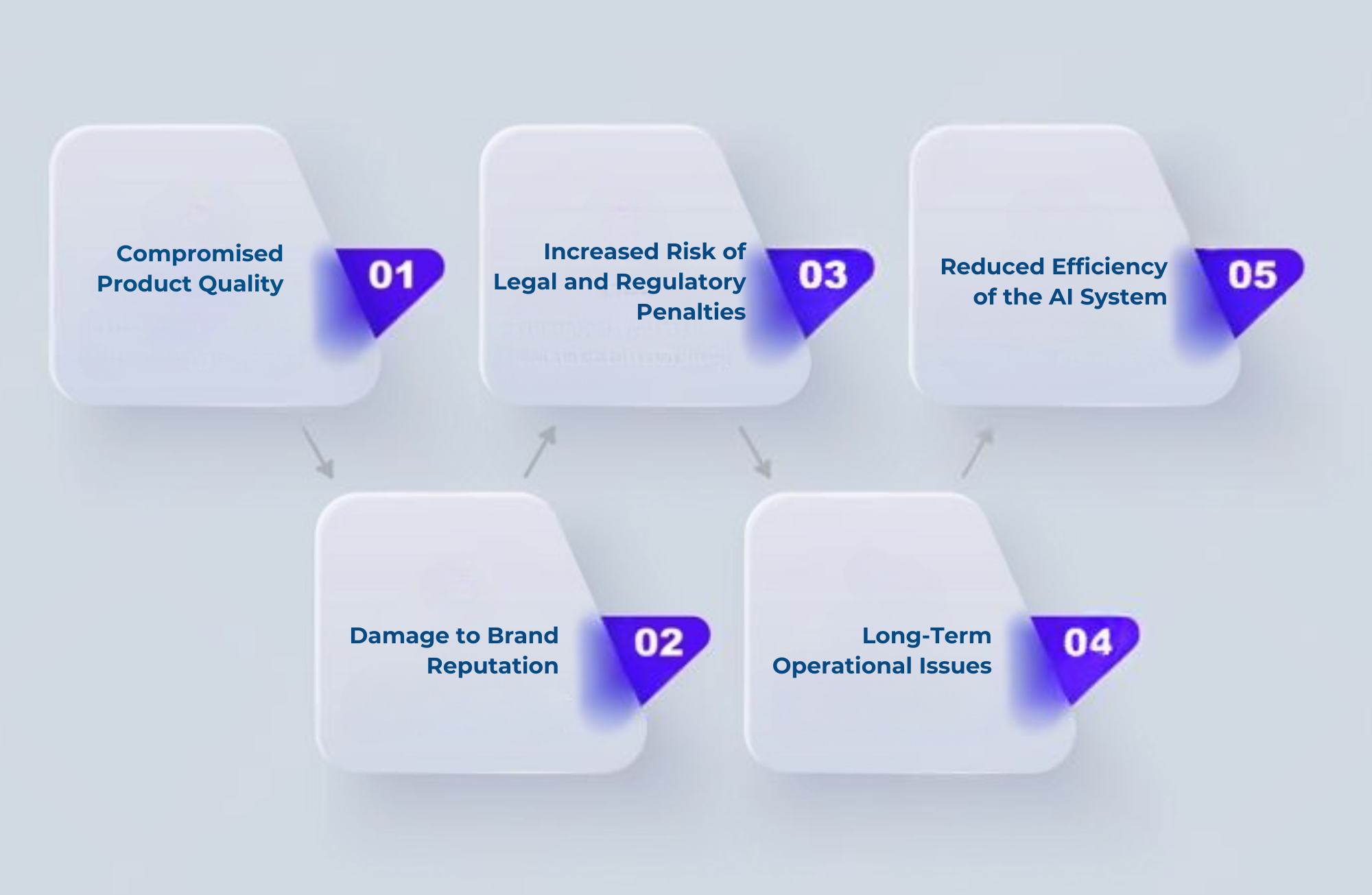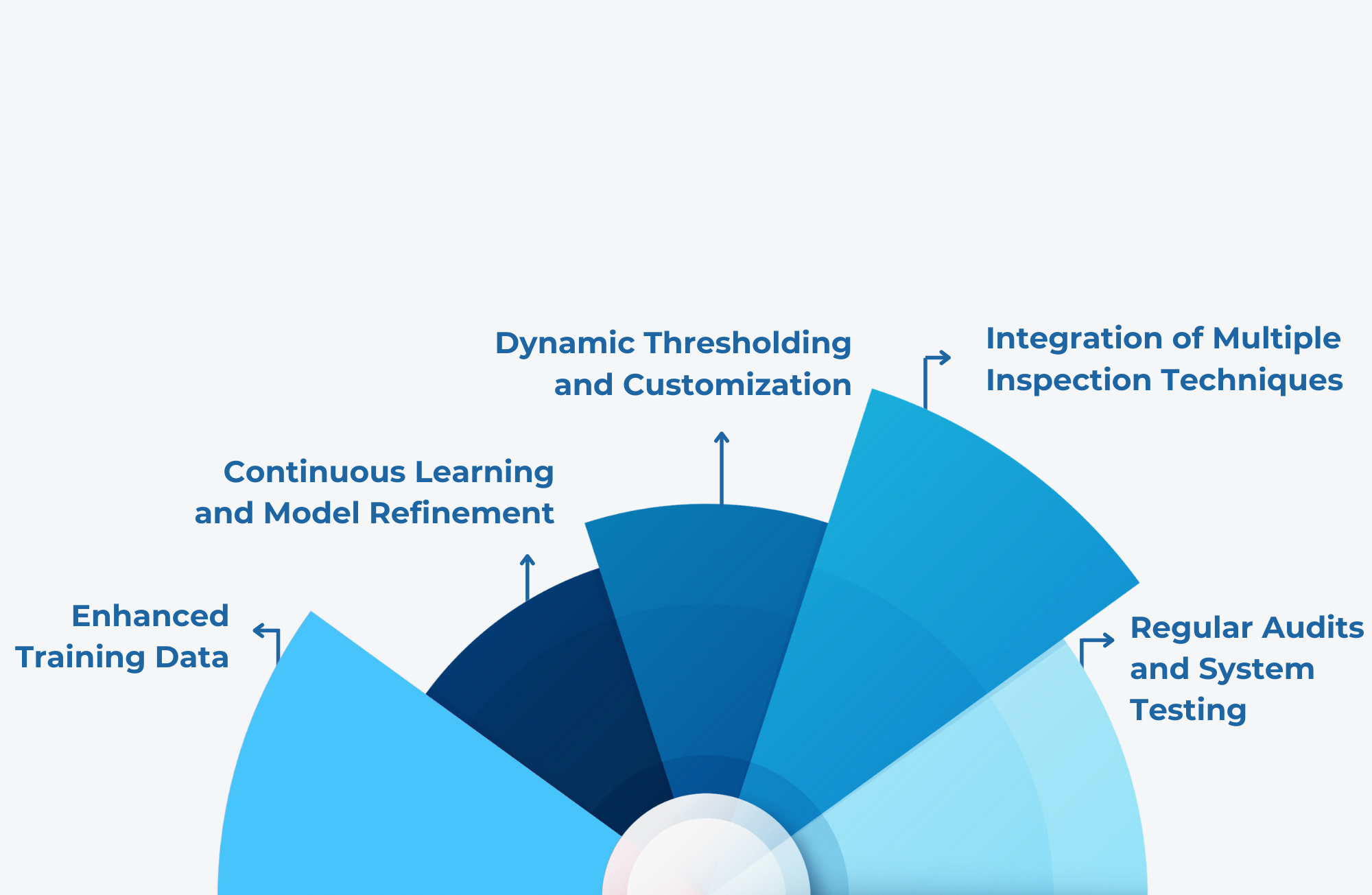What is False Positives and False Negatives in AI driven Inspections automation
Published on: Nov 15, 2024

Written by: Soumen das
False Positives and False Negatives in AI Inspection Systems and Solutions
Artificial Intelligence (AI) is revolutionizing the manufacturing industry by enhancing the inspection processes. AI-driven systems, particularly those involving machine learning and computer vision, are being adopted to automate defect detection, quality control, and process optimization in factories. However, despite their potential to improve efficiency and accuracy, AI inspection systems are not immune to errors. Two critical types of errors that occur during AI-driven inspections are false positives and false negatives. Understanding how these errors affect manufacturing processes is vital to optimizing AI systems for better performance.
What Are False Positives and False Negatives?
In the context of AI-driven inspection, false positives and false negatives are terms used to describe errors in the detection of defects.
- False Positive (Type I Error): A false positive occurs when the AI system mistakenly classifies a non-defective item as defective. In other words, it signals an issue that does not exist, causing a product or part to be rejected unnecessarily. For instance, a computer vision system might flag a tiny imperfection in a component that doesn’t affect its functionality as a major defect.
- False Negative (Type II Error): A false negative happens when the AI system fails to detect an actual defect, allowing a defective product to pass the inspection. This is particularly concerning in industries where defects can lead to safety hazards, such as automotive, aerospace, or medical device manufacturing.
Both errors—false positives and false negatives—pose significant challenges to AI-driven inspection in manufacturing. Understanding these challenges is essential for improving AI models and ensuring high-quality production.

Impact of False Positives in AI-Driven Inspection
False positives occur when the AI system erroneously flags a non-defective part as defective. While this may seem harmless at first, false positives can have several significant impacts on the manufacturing process.
1. Increased Production Costs
False positives result in the unnecessary rejection of good products, leading to waste. A part flagged as defective may need to be scrapped or reworked, both of which incur additional costs. These additional processes can lead to significant increases in production expenses, especially if large volumes of products are falsely flagged. The cost of human inspection for verification also adds to the overall expense.
2. Decreased Throughput
The productivity of manufacturing operations is directly impacted by false positives. When a part or product is wrongly identified as faulty, workers or automated systems may need to intervene, further delaying the production process. These delays disrupt the flow of the assembly line, reducing throughput, and slowing down overall manufacturing performance.
3. Resource Allocation and Overproduction
In industries where just-in-time production is critical, false positives can lead to overproduction of replacement parts to compensate for incorrectly identified defects. This wasteful overproduction ties up resources, such as labor, raw materials, and machinery, further driving up costs.
4. Customer Satisfaction Issues
If a product is erroneously flagged as defective and sent back for rework or rejected, it might delay shipments. In high-demand industries, such delays can impact customer satisfaction and disrupt supply chain schedules. In extreme cases, the rejection of parts or products due to false positives may lead to missed deadlines or contractual penalties.
5. Inaccurate Process Improvement Data
AI systems improve over time by learning from the data they collect. However, false positives can distort this data, making it appear that the manufacturing process is producing more defects than it actually is. This can lead to misguided decisions about equipment upgrades, production modifications, or quality control interventions that are unnecessary.

Impact of False Negatives in AI-Driven Inspection
False negatives, while less frequently discussed, often have more severe consequences. This type of error occurs when the AI system fails to detect an actual defect, allowing a defective part to pass through the inspection process.
1. Compromised Product Quality
The most critical consequence of a false negative is the compromise of product quality. If a defective part is passed as acceptable, it may lead to the failure of a product. In industries such as automotive, aerospace, or medical devices, a missed defect can result in catastrophic outcomes, including safety risks, product recalls, and even fatalities.
For example, in the aerospace industry, a defect in a structural component that goes undetected due to a false negative could result in the failure of an aircraft. This type of oversight could have dire consequences for the company and its customers.
2. Damage to Brand Reputation
Manufacturers rely on the quality of their products to build brand loyalty. A false negative, where defective products make it into the market, can significantly damage a company’s reputation. News of faulty products reaching consumers can lead to negative publicity, loss of consumer trust, and long-term damage to the brand.
3. Increased Risk of Legal and Regulatory Penalties
In highly regulated industries, such as pharmaceuticals and food manufacturing, missing a defect due to a false negative can lead to severe legal consequences. Regulatory bodies impose strict safety standards, and failure to detect a defect that violates these standards can result in fines, recalls, lawsuits, and even business shutdowns.
4. Long-Term Operational Issues
The consequences of false negatives can go beyond immediate product failures. If a defective part is incorporated into the assembly line, it may cause problems further down the production line or during end-use. Equipment failures, machine downtimes, and additional repair costs can result from defects that were missed during the inspection phase.
5. Reduced Efficiency of the AI System
False negatives also hinder the performance of AI-driven systems in the long run. Machine learning models rely on identifying patterns in data to improve their accuracy over time. When defects are missed, the system does not learn from these errors, reducing its effectiveness in subsequent inspections and limiting its ability to detect similar defects in the future.

Solutions to Minimize False Positives and False Negatives
Given the significant impact that false positives and false negatives can have on AI-driven inspection systems in manufacturing, it is essential to implement strategies to mitigate these errors. Below are several approaches that can be used to minimize both types of errors:
1. Enhanced Training Data
One of the key ways to reduce both false positives and false negatives is to improve the quality and quantity of the training data used to train AI models. The more diverse and representative the dataset, the better the AI system will become at identifying real defects and distinguishing them from normal variations. For example, including images of parts in various lighting conditions, angles, and states of wear can help the AI model learn to identify defects more accurately.
2. Continuous Learning and Model Refinement
AI models must be continuously retrained and refined to adapt to new manufacturing conditions and defect types. Feedback loops should be integrated into the system to allow for continuous learning from both false positives and false negatives. When human inspectors or automated systems identify mistakes, this information should be fed back into the system to improve future decision-making.
3. Dynamic Thresholding and Customization
AI-driven systems should be tailored to the specific needs of the manufacturing process. Dynamic thresholding—adjusting the sensitivity of the system depending on the type of product, part, or stage of production—can help minimize false positives and false negatives. For example, a higher sensitivity setting may be appropriate in critical stages, while less stringent thresholds can be used for non-critical parts.
4. Integration of Multiple Inspection Techniques
AI inspection systems can benefit from incorporating various inspection techniques, such as visual inspection, acoustic sensors, temperature measurements, and vibration analysis. By using multiple methods of defect detection, AI systems can reduce the likelihood of false positives and false negatives. The integration of complementary inspection techniques improves the accuracy of defect detection and enhances overall quality control.
5. Regular Audits and System Testing
To ensure the AI-driven inspection system continues to perform optimally, it is essential to conduct regular audits and system tests. These checks can identify any shifts in performance or emerging patterns of false positives or false negatives. Regular testing and calibration of AI systems also help to maintain the integrity of the models and ensure that any issues are caught before they affect production.

False positives and false negatives are inherent challenges in AI-driven inspection systems used in manufacturing. While false positives lead to unnecessary waste, delays, and increased costs, false negatives pose a more significant threat to product quality, safety, and reputation. To mitigate these issues, manufacturers should focus on improving training data, refining AI models through continuous learning, and integrating human oversight. By adopting a combination of AI and human inspection, utilizing dynamic thresholds, and incorporating multiple inspection techniques, manufacturers can significantly reduce both types of errors and enhance the efficiency, quality, and reliability of their production processes. The future of AI in manufacturing depends on the ability to address these challenges and ensure that AI systems can operate at their full potential.

